Dear Ladies, Be aware of Breast Lump. A breast lump is non-cancerous. A sign of cancer. So, seek a medical practitioner for treatment. You can develop lumps on your breast irrespective of age. It develops in both men and women but they are common in women.
Even babies develop them. Prepubescent girls are liable to get them but, during puberty these lumps disappear.
Meaning
- It is a localized bulge, bump, or swelling in the breast.
- They are not very harmful.
- If you see any lump, it is better for you to consult your family doctor.
Main Causes of Lumps in Breast
Now, let us analyze the main causes of lumps being developed in women’s breasts.
Cause 1: Breast Cyst
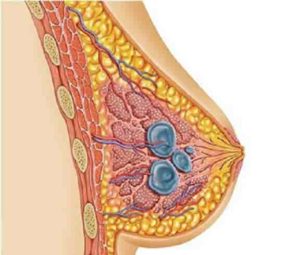
- Fluid-filled, soft sacs.
- Non-cancerous.
- Smooth and rubbery under the skin.
- Some of them are painless, some are painful.
- They are rare in women aged above fifty years.
- This cyst ranges in size from very tiny to large cyst.
- Visible-Ultrasound scan.
Cause 2: Fibroadenomas(Adenoma)
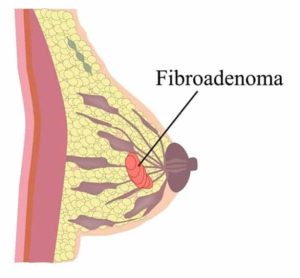
- Non Cancerous rubbery lumps.
- Move easily within the breast tissue and becomes cancerous rarely.
- Very common to women whose age ranges between thirty to thirty-five years.
- It can also occur in women below thirty years of age.
- They are solid and strong tumors.
- Normally painless.
- Grows quickly for teenagers or during pregnancy.
Cause 3: Fibrocystic Breast
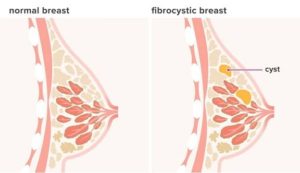
- A condition where the tissue of the breast feels lumpy in texture and is painful.
- They are characterized by lumpy breasts.
- They have many irregularities in the tissue of the breast.
- Occurrence of fibrocystic breast-When a woman’s breast is delicately sensitive to changing hormone levels.
Cause 4: Abscesses(Infection)
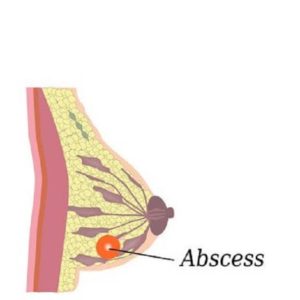
- They develop in the breast.
- Very painful.
- Highly Non-Cancerous.
- Caused by bacteria.
- Breast skin becomes red and feels hot or solid.
- Breastfeeding mothers suffer from abscesses.
Cause 5: Fat necrosis and Lipoma
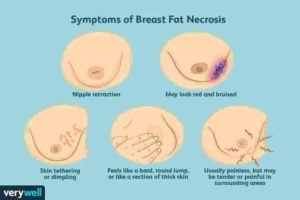
- When the breast’s fatty tissue gets damaged, fat necrosis may occur.
- Non- Cancerous lumps form in the breast.
- Highly painful.
- There may be a nipple discharge and a skin dimpling over the lump.
- Lipoma-A fatty tumor.
- It is a soft, non-cancerous lump that is movable and painless.
Cause 6: Intraductal Papilloma
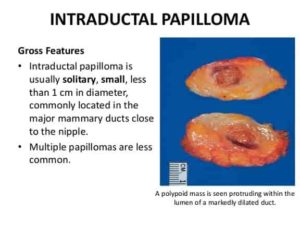
- A small non-cancerous tumor in a milk duct.
- They are wart-like growth that develops in the ducts of the breast.
- Intraductal Papillomas develop below the nipple.
- Sometimes, there is a discharge of blood.
- Younger women have such multiple growths.
- Ladies suffering from menopause have just one.
Cause 7: Milk Cyst
- Sacs filled with milk that occurs during breastfeeding.
Cause 8: Mastitis
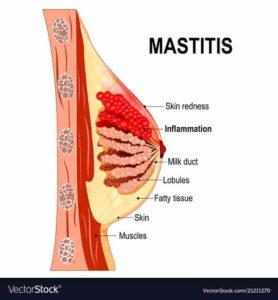
- Infection of the breast.
- A breastfeeding woman is treated with warm antibiotics and compresses.
Cause 9: Breast Cancer
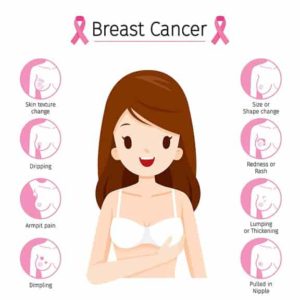
- Cancerous lumps.
- A hard or strong breast tumor.
- It has an irregular shape.
- Cancerous lumps are stuck to the skin or a deep tissue within the breast.
- It is not painful in the early stages.
- Breast tumor develops in any part of the breast or nipple.
- A cancerous lump is common in the upper outer quadrant.
- These tumors are painful when enlarged.
- It also leads to death.
Cause 10: The age factor
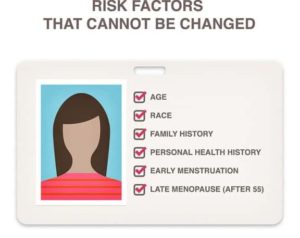
- The biggest risk factor for breast cancer.
- Breast cancer risk increases with age.
- A woman who has prior breast cancer or who has a family history of breast cancer faces risk.
Also Read: Myths about the causes of Breast cancer
Cause 11: Genetic Factor
- 5 percent to 10 percent of breast cancer patients have been shown to be linked to inherited mutations(genetic changes).
- Most common mutations- BRCA1, BRCA2 genes.
- Some genetic mutations may lead to breast cancers.
Symptoms
Symptom 1: Breast lump or a breast mass
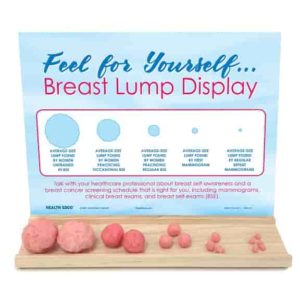
- Main common symptom.
- It is always a symptom of cancer.
Symptom 2:Nipple discharge or redness

- It occurs without the nipple being touched.
- Caused by non-cancerous growth.
- Examples of non-cancerous growth-intraductal papillomas.
- Intraductal papillomas protrude into the milk ducts and dilated areas of milk ducts.
- Nipple discharge is caused by breast cancer tissue.
- Sign of cancer.
Symptom 3: Changes in the breast’s skin
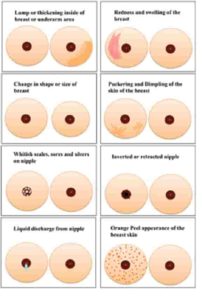
- Dimpling or orange peel appearance.
- Skin changes include redness and warmth.
- Skin rash-scaly patches of skin and red itchy patches or bumps all over the body.
- It can also be a sign of breast cancer.
Symptom 4: Swelling of a certain part of the breast
Symptom 5: Inflammation
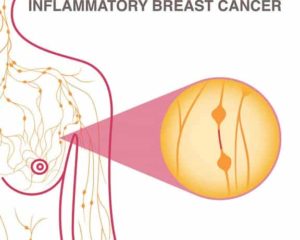
- A form of breast cancer that causes symptoms and signs of inflammation.
- It is otherwise called Paget’s.
- A disease of the breast.
- Inflammation-Breast rashes.
- They are not due to cancer but due to problems like fungal infection or nipple eczema.
- If the rashes are scaly and red or if there is nipple discharge, they are often biopsied by the physician.
Treatments
Depending upon the cause of the lump, treatment or physical examination must be done. Now, let us see the various treatment methods recommended.
Treatment 1: Mammogram
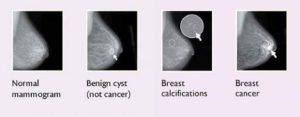
- Mammogram- a test producing an image of the breast tissue on film.
- Technique-Mammography.
- It can visualize abnormal and normal structures such as breast cyst, tumors, and calcification.
- First baseline mammogram for a woman-between the age of 35 to 40.
- Women suffering from a breast lump need to have a mammogram.
- A mammogram detects 90 % of breast cancers.
- 10% of breast cancers are missed by mammography.
- When a woman or her physician traces a lump and finds that mammogram is normal, further biopsies can be done.
- As soon as calcium deposits appear on the mammogram, the doctor is highly suspicious of cancer.
- The doctor must take a proper biopsy with mammogram images to detect the correct area.
Treatment 2: Ultrasound (Ultrasonography)
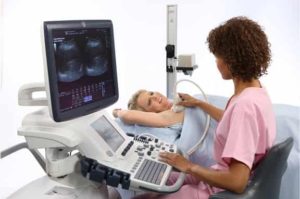
- Ultrasound-Imaging of the body in medical treatment and screening of disease.
- It includes heart valve irregularities, heart disease, TIAs, stroke, carotid artery disease, kidney stones, liver disease, female reproductive disease, male reproductive organ disease, and gallstones.
- Useful in breast lump evaluation.
- Ultrasound treatment method is used to differentiate between a cyst(filled with fluid) and a solid lump(which may or may not be cancerous).
- First step in breast lump evaluation-to determine whether it is a cyst or solid lump(through ultrasound examination).
- A woman with a confirmed ultrasound and anticipated cyst needs no biopsy.
- Recommendation of diagnostic treatment for an unclear ultrasound.
Treatment 3: Magnetic Resonance Imaging(MRI)
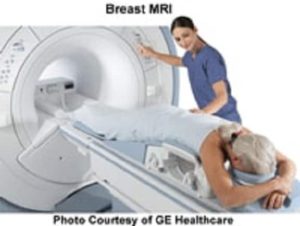
- A popular method used for breast lump evaluation.
- A special radiology technique used to image the internal parts of the body.
- MRI images help to determine whether a particular area is cancerous.
- MRI reveals greater contrast in areas with increased blood supply.
- Limitations-Non detection of calcium deposits.
Treatment 4: Oral Contraceptives or other medications
- If you suffer from breast pain, you needn’t worry about it.
- It is only a normal condition caused by non-artificial hormonal fluctuations.
- If the pain is acute and heavy, you can go for oral contraceptives or other medications.
Treatment 5:Heat treatment

- Heat treatment helps to open up the milk ducts.
- Convenient and effective treatment.
- Wet some washcloths and put them in a microwave to warm the lumps.
- Massage the infected area during heat treatment.
Note:
- Pain or swelling relief method-baby-feeding/using a breast pump.
Treatment 6:Hot Shower Treatment
Guidelines (Self-Examination Tips for Women)
Dear ladies, you should be very alert in giving proper care for maintaining your body and breast. If you happen to see any breast lumps or changes, stick on to the following guidelines.
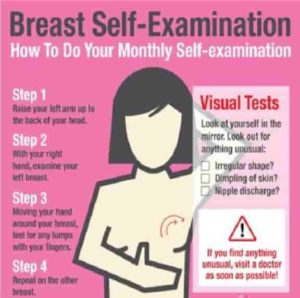
- Use a mirror and check and see the shape, size, look, and color for breast swellings or lumps.
- Raise your arm and repeat the first step.
- Check and see whether there is any nipple discharge which may be milky, yellow, watery with blood.
- Feel your breast while lying down with a soft strong-motion including your armpits.
- Repeat the above step while sitting or standing.
- It may be easier when you take a shower.
Foods to be taken to prevent Breast Lump leading to Breast Cancer

- Choose healthy diet-rich in vegetables, chicken, whole grains, and fish.
- Take soy-based foods such as soy milk, tofu, and edamame.
- Skip taking lots of sugar.
- Eat more plant-based foods including fruits and vegetables.
- Consume barley, oats, corn, rye, and wheat.
- Avoid smoking and drinking.
- Use organic foods in cooking (without pesticides or weed killers).
- Add milk, yogurt, and orange juice to your diet.
- Add salmon, mackerel, herring, oysters, and sardines.
- Take lot of carrots, pumpkins, spinach, sweet potatoes, kale, cabbage, tomato, cucumber, watermelon, etc.
- Drink green tea.
- Use garlic, soybeans, and flaxseed.
“Keep the lumps out of your breasts”.
Thank You for reading this article.
Stay Safe!!!